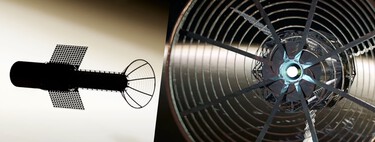On the left, the last photo sent by NASA’s InSight robot from the surface of Mars. On the right, a much more recent image taken from Mars orbit by the Mars Reconnaissance Orbiter. It is the same place from different perspectives.
Can you see InSight? “The lander was recently observed by the Mars Reconnaissance Orbiter,” says a publication from NASA.
“By studying the InSight landing site over time, scientists can learn how quickly it accumulates dust, which helps estimate the age of other surface disturbances.”
The loneliest drill on Mars. Unlike the rovers that roam the planet and the probes that orbit it, InSight was equipped with a seismometer and a drill to land on a fixed point on Mars and explore the subsurface.
The robot landed on November 26, 2018 on a plain known as Elysium Planitia. During its mission it detected more than 1,300 earthquakes that helped determine the size and composition of the Martian core, mantle and crust.
However, InSight had trouble using its drill. It was planned to drill up to five meters into the surface of Mars, but the soil was more compact than expected and it could only dig a few centimeters.
The good side of collecting dust. Another problem that made InSight’s mission very difficult was the rapid accumulation of dust on its solar panels. Unlike the nuclear-powered Perseverance and Curiosity rovers, InSight relied on its photovoltaic cells.
The robot ended up being left without the ability to generate power due to dust and had to say goodbye at the end of 2022 when its batteries ran out. If you look closely at the photo taken from orbit, you can see its two circular solar panels deployed next to the robot’s body.
The ‘postmortem’ evolution of InSight is closely followed by the Mars Reconnaissance Orbiter probe. The spacecraft has been circling Mars for 18 years in search of evidence of water and other features of the red planet.
Dust was what ultimately doomed InSight, but following its evolution from orbit can help scientists better understand Martian dynamics.
Images | NASA/JPL
In Xataka | Alternating layers of sediment and volcanic rock: the Mars InSight seismograph manages to analyze what lies beneath the Martian surface











![[Img #74674]](https://thelatestnews.world/wp-content/uploads/2024/12/Santiago-Ramon-y-Cajal-The-promoter-of-modern-neuroscience-300x200.jpg)
Add Comment